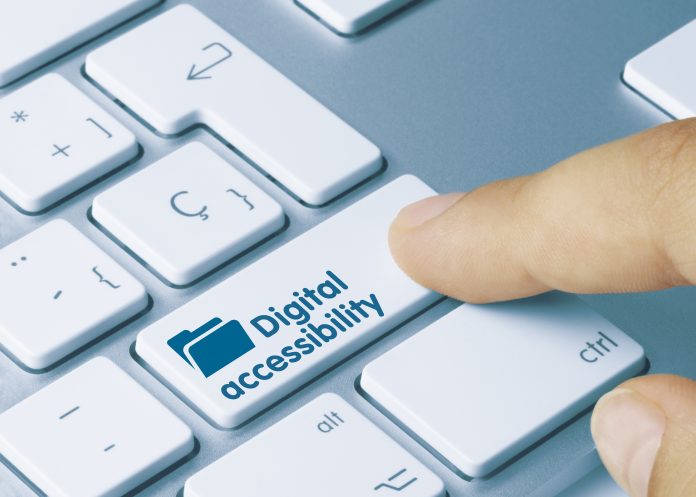Ryan Graham, CTO, Texthelp Group, explores the future of online accessibility within the public sector, with reference to WCAG 3.0
The COVID-19 pandemic has led to people using the internet more often and for more reasons. It has sped up the need for public services to be primarily online, or ‘digital by default’. This change has impacted older and disabled web users more than most.
Councils, government bodies and NHS Trusts across the UK reacted quickly to the abrupt channel shift and have done an admirable job of serving citizens and patients online.
However, there is always more to be done to ensure that our digital platforms and content are accessible. Prioritising digital inclusion has never been so important.
In the UK, digital accessibility has become a pressing issue for public sector organisations. This is largely down to the Public Sector Bodies (Websites and Mobile Applications) (No. 2) Accessibility Regulations (2018). It requires all public sector bodies to make sure their websites and mobile applications are accessible and inclusive.
With a new legislative deadline just passed in June, it’s time to look forward to where we are heading with accessibility. Here are a few predictions about changes we can expect to see in this space and some things that digital leaders and enthusiasts should be thinking about.
Accessibility will become more important
As organisations are forced to embrace digital change it is inevitable that accessibility will become more important than ever.
The NHS and Gov.uk are turning their attention to improving Digital Inclusion. This means helping people use and benefit from the internet. Especially those who typically struggle to access or operate online.
With this in mind, we can see that the need for accessibility can only grow. If we make it easier for people to get online, we also need to make sure our platforms are accessible and inclusive.
Changes in legislation
Most public sector organisations will be aware of the imminent legislative deadline. Currently, organisations must ensure that all websites meet accessibility standards. From 23rd June 2021, these requirements extend to mobile applications also.
As mentioned previously, regulations in the UK mandate that public sector websites and apps must meet the international WCAG 2.1 AA accessibility standard.
W3C, the body responsible for setting accessibility standards, is currently working on an updated version of the guidelines, WCAG 3.0. It is feasible that if adopted, these guidelines could influence and drive change in accessibility legislation over the next few years.
WCAG 3.0
W3C has released the first draft of WCAG 3.0. Already, we know that the new standards will provide better support for a wider range of needs and disabilities and will be more far-reaching than the current version.
To date, cognitive accessibility has not been covered as well in standards and regulations as accessibility for other groups. However, WCAG 3.0 will aim to introduce better accessibility for users with cognitive impairments. The range of disabilities within this is broad. It includes people with:
- Intellectual disabilities
- Age-related issues such as memory impairment
- Mental illnesses such as:
- Depression
- Anxiety disorders
- Schizophrenia
- Learning disabilities and difficulties. Such as:
- Dyslexia
- Attention deficit hyperactivity disorder (ADHD)
- Autism
Tools that can help
One of the biggest developments over the last ten years has been in the accessibility software space. There is now a myriad of tools available to help organisations tackle accessibility and embed inclusion.
“The COVID-19 pandemic has led to people using the internet more often and for more reasons. It has sped up the need for public services to be primarily online, or ‘digital by default’.”
There are free tools that will help you evaluate your website such as WAVE and Cynthia Says. In fact, there are many programmes that will help you tackle individual parts of the problem. However, at Texthelp we were keen to build a solution that did it all.
So, this year, we launched ReachDeck. ReachDeck helps you to improve the accessibility, readability and reach of your online content. It scans your website for WCAG errors and helps you stay legally compliant. But it goes further than that, offering tools that help improve the readability of your written content. And offering reading and translation support for your website visitors.
If you’re interested you can read more about how the team at Bridgewater Community Healthcare NHS Foundation Trust have been using ReachDeck on their accessibility journey.
We are offering all organisations the chance to use ReachDeck and improve the experience for their online visitors, for free for thirty days.
Ryan Graham, is Chief Technical Officer at The Texthelp Group – a global technology company helping people all over the world to understand and to be understood.
Please note: This is a commercial profile
© 2019. This work is licensed under CC-BY-NC-ND.











